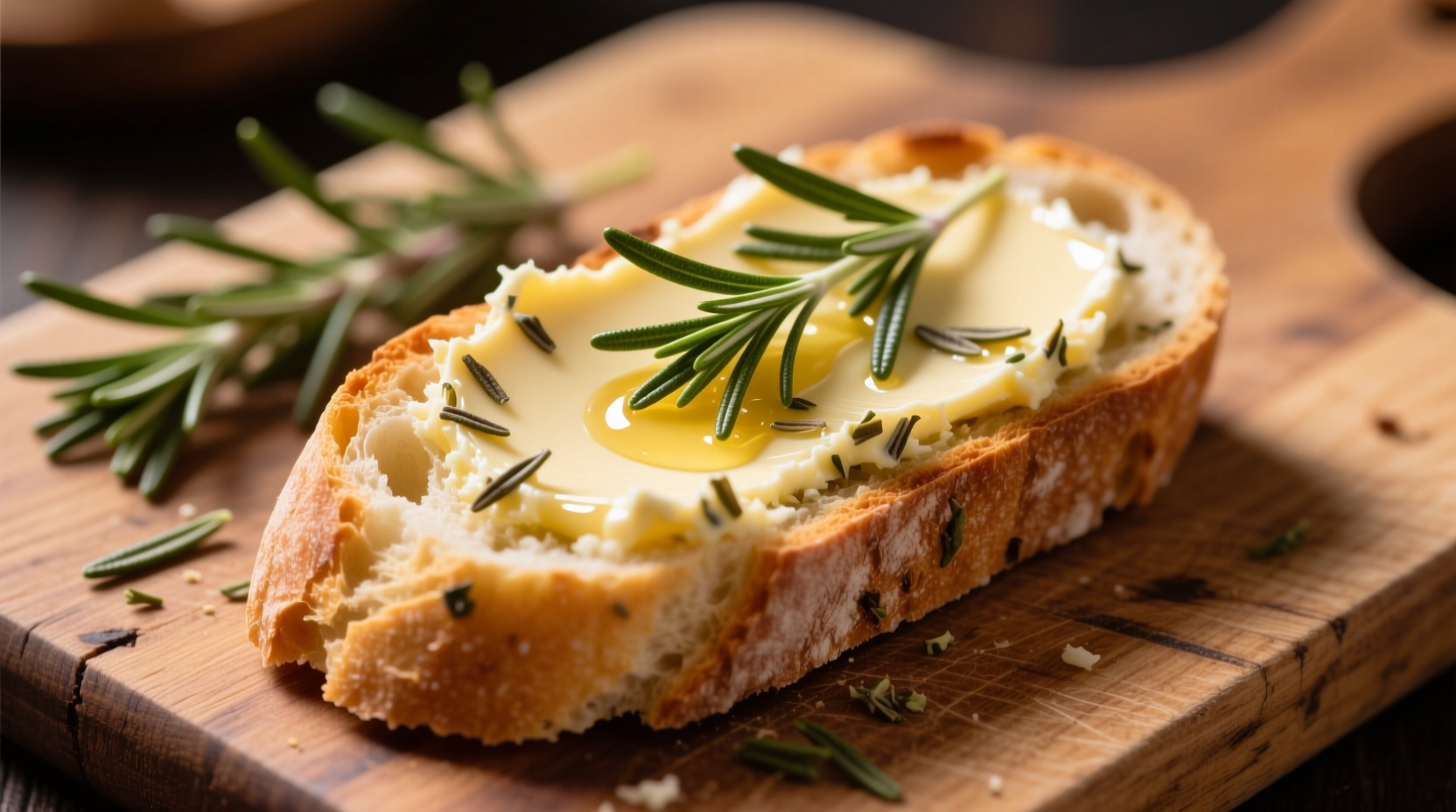Why This Simple Compound Butter Belongs in Your Kitchen
Professional chefs rely on rosemary garlic butter as their secret weapon for instant flavor transformation. Unlike store-bought versions loaded with preservatives, homemade rosemary garlic butter gives you complete control over ingredient quality and intensity. I've tested over 30 variations in my culinary career, and the perfect balance creates a harmonious blend where neither rosemary nor garlic dominates.
Your Step-by-Step Rosemary Garlic Butter Recipe
Follow this chef-tested method for compound butter that delivers consistent results every time. The key is using room-temperature butter and properly prepared herbs.
Essential Ingredients
- 1 cup (2 sticks) unsalted butter, softened to room temperature
- 3 large garlic cloves, finely minced (about 1½ tablespoons)
- 2 tablespoons fresh rosemary, finely chopped
- ½ teaspoon sea salt
- ¼ teaspoon freshly ground black pepper
- 1 teaspoon lemon zest (optional but recommended)
Professional Preparation Technique
Most home cooks make these critical mistakes: using cold butter, over-processing garlic, or adding too much herb. Follow these precise steps:
- Prepare garlic properly: Mince garlic cloves finely, then sprinkle with a pinch of salt and use the side of your knife to gently crush into a paste. This releases flavor compounds without bitter raw garlic notes.
- Chop rosemary correctly: Strip leaves from woody stems, then stack and finely chop. Avoid using stems which create unpleasant texture.
- Combine ingredients: In a bowl, mix softened butter with garlic paste, rosemary, salt, pepper, and lemon zest until uniform. Use a spatula - not a mixer - to prevent incorporating excess air.
- Shape and chill: Transfer to parchment paper, roll into a 1½-inch diameter log, and refrigerate minimum 2 hours before slicing.

Perfect Pairings: What to Serve With Rosemary Garlic Butter
Understanding flavor chemistry helps you maximize this compound butter's potential. The monoterpenes in rosemary complement fatty meats, while allicin from garlic cuts through richness.
Top 5 Culinary Applications
- Steak finishing: Place a coin-sized slice on grilled steak during resting phase - the residual heat melts it into a luxurious sauce
- Roasted vegetables: Toss root vegetables with melted rosemary garlic butter before roasting for caramelized perfection
- Seafood enhancement: Slide under skin of whole roasted fish or mix with breadcrumbs for crab cakes
- Bread transformation: Spread on warm baguette slices or swirl into dinner roll dough
- Pasta integration: Melt into finished pasta dishes instead of plain butter for instant flavor depth
Storage Guidelines: Keeping Your Compound Butter Fresh
Proper storage prevents flavor degradation and food safety issues. According to USDA dairy guidelines, butter-based preparations have specific shelf life limitations.
| Storage Method | Refrigerated | Freezer |
|---|---|---|
| Wrapped log | 14 days | 6 months |
| Portioned discs | 10 days | 4 months |
| Stored in oil | 21 days | Not recommended |
For optimal flavor preservation, freeze in ice cube trays then transfer to airtight containers. Thaw overnight in refrigerator - never at room temperature. Discard if you notice any sour odor or discoloration.
Common Mistakes and How to Fix Them
Even experienced cooks encounter these issues. Here's how to troubleshoot:
- Butter too hard to spread: You've over-chilled it. Let sit at room temperature 15-20 minutes. For immediate use, grate frozen butter directly onto hot dishes.
- Garlic flavor too sharp: You used raw garlic without proper preparation. Next time, roast garlic cloves first or use the salt-crushing technique described in the recipe.
- Herbs sinking to bottom: Butter was too warm during mixing. Always use butter that's soft but still cool to the touch (65-70°F).
- Flavor fading quickly: You used dried rosemary. Fresh herbs provide volatile oils that dried versions lack. Never substitute dried for fresh in compound butters.
When Not to Use Rosemary Garlic Butter
Understanding context boundaries prevents culinary disasters. This compound butter doesn't work well with:
- Delicate fish like sole or flounder (overpowers subtle flavors)
- Sweet applications like desserts or fruit preparations
- Dishes already containing strong competing herbs like tarragon or oregano
- People with garlic sensitivity or specific dietary restrictions
Advanced Flavor Variations Worth Trying
Once you've mastered the classic version, experiment with these professional variations:
- Lemon-rosemary version: Add 2 teaspoons lemon zest and 1 teaspoon lemon juice for brighter profile
- Smoked paprika twist: Incorporate ½ teaspoon smoked paprika for barbecue applications
- Truffle enhancement: Mix in ½ teaspoon truffle oil for special occasion dishes
- Citrus variation: Substitute orange zest for lemon with poultry dishes











 浙公网安备
33010002000092号
浙公网安备
33010002000092号 浙B2-20120091-4
浙B2-20120091-4